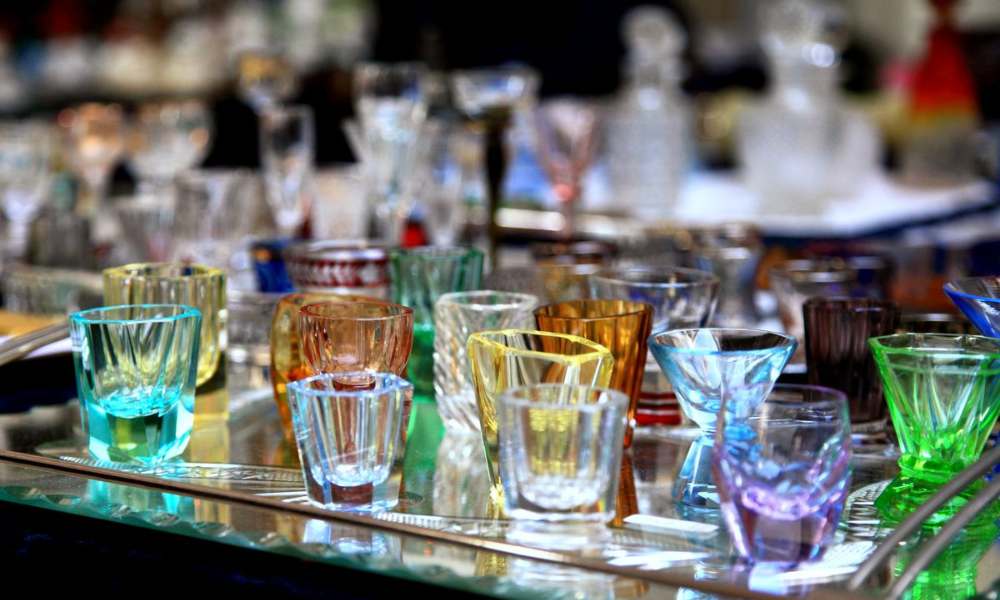Welcome to the fascinating world of glassware! Whether you’re a budding collector, an antique enthusiast, or simply curious about the glass pieces adorning your shelves, understanding how to identify glassware is an invaluable skill.
In this beginner’s guide, we’ll explore the essential techniques and tips to help you recognize various types of glass, determine their age, and appreciate their craftsmanship. From the elegant contours of Art Deco vases to the intricate patterns on pressed glass plates, you’ll learn how to look beyond the surface and discover the stories these glass items hold. So grab your magnifying glass, and let’s delve into the transparent yet mystifying world of glassware.
Understand the Types of Glass
Before you can identify specific pieces of glassware, it’s important to understand the different types of glass used in their making:
- Soda-lime glass: The most common type, used in everything from drinking glasses to window panes.
- Lead crystal: Known for its brilliance and clarity, lead crystal glassware is heavier and reflects light beautifully.
- Borosilicate glass: Highly resistant to thermal shock, This type is often used in scientific lab equipment and kitchenware like measuring cups.
- Tempered glass: Strengthened through thermal or chemical treatments, tempered glass is much tougher and shatter-resistant.
How to Identify Glassware
Look for Maker’s Marks and Signatures
One of the easiest ways to identify glassware is by looking for a maker’s mark, signature, or logo. These are often found on the bottom or side of the piece, Familiarize yourself with the logos of well-known manufacturers, Which can be found through online databases, collector’s guides, or antique shops.
Examine the Quality and Craftsmanship
When evaluating glassware, understanding the nuances in its quality and craftsmanship can provide insightful clues about its provenance, historical context, and intrinsic value. High-quality glass often boasts a flawless finish, minimal bubbles, and a consistent thickness throughout, indicating skilled manufacturing and meticulous attention to detail.
Conversely, hand-blown glass, cherished for its artisanal charm, Typically exhibits subtle asymmetries and pontil marks — the distinctive scars where the piece was separated from the blowing rod. These characteristics not only highlight the unique, human touch involved in its creation but also help collectors and enthusiasts authenticate the age and origin of the piece, enriching its story and enhancing its appeal.
Consider the Style and Pattern
Glassware comes in myriad styles and patterns, some tied to specific eras. For example, Art Deco glassware features geometric shapes and bold colors, while Victorian glass often includes intricate designs and floral patterns. Researching online or through books can help you connect a piece’s style to a particular period or manufacturer.
Use Color and Clarity as Clues
The color and clarity of glassware can also provide valuable information. Certain colors or combinations were popular during specific times or were unique to certain manufacturers. For instance, cobalt blue was a popular color in the early 20th century, and milk glass has a distinctive, opaque white that is easy to spot.
Light It Up
When trying to identify glassware, lighting can play a crucial role. Hold the glass up to a light source and look through it. This can reveal hidden details like etchings, imperfections, or even uranium glass, which glows under UV light due to its uranium content.
Consult Experts
If you’re still stumped don’t hesitate to consult with experts. Antique dealers, experienced collectors, and appraisers can provide insights and help you identify rare or unusual pieces. Joining a local or online glassware club can also connect you with resources and experts enthusiastic about glassware identification.
How to Identify Glassware
Use Identification Tools
There are tools and resources available to help identify glassware, including mobile apps and websites dedicated to glassware identification. These can offer visual searches, pattern recognition, and access to extensive databases of glassware types and patterns.
Conclusion
Identifying glassware is an art that combines attention to detail, historical knowledge, and a bit of detective work. With practice, you can become proficient at distinguishing between different types of glass and understanding their historical and cultural contexts. Whether for personal enjoyment, academic study, or investment in collectibles, the skills of glassware identification are both useful and rewarding. Happy hunting!
